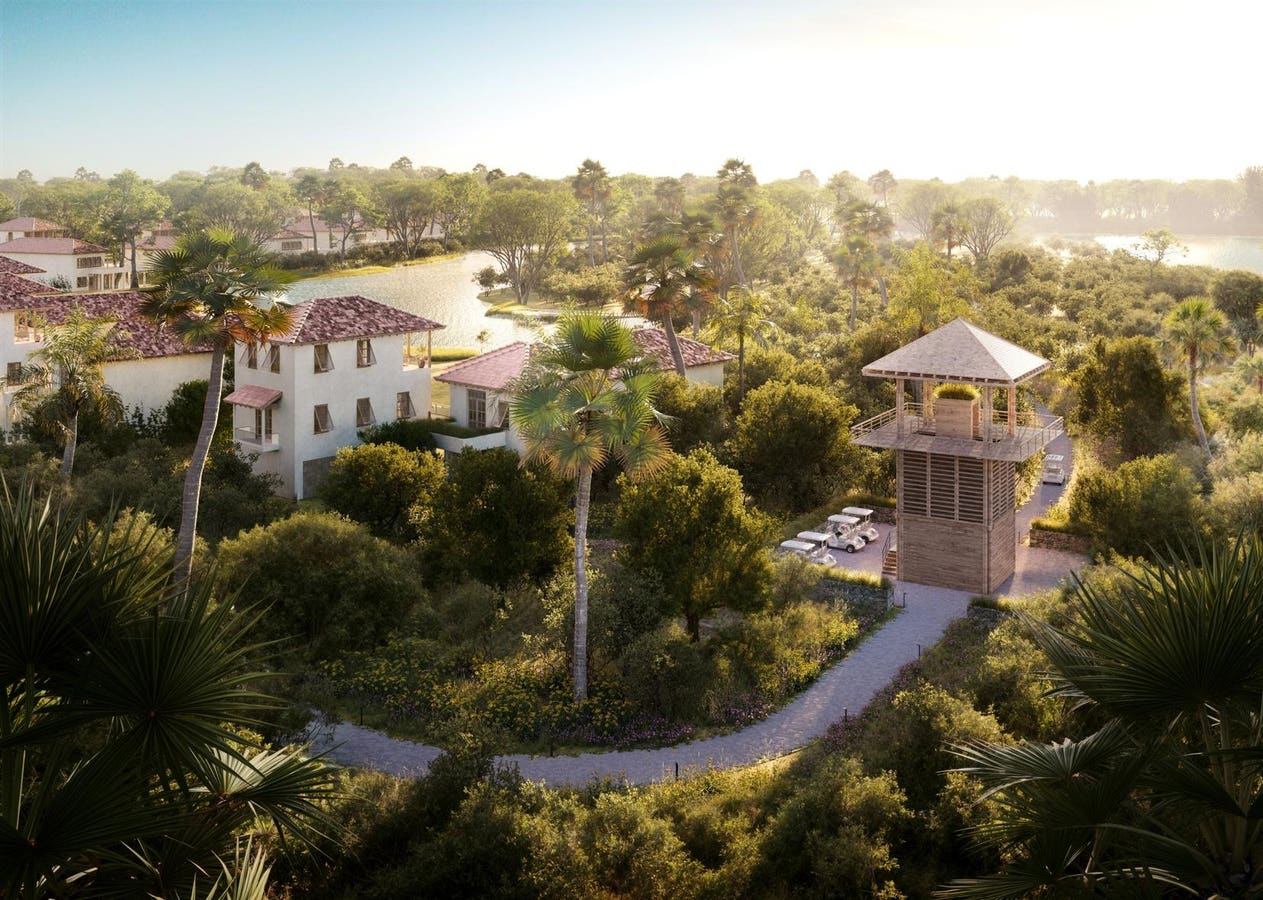LAKE BUENA VISTA, FL – OCTOBER 8: In this handout photo provided by Walt Disney World Resort, Magic … [+]
More than 50 million people descend on Disney’s Florida theme parks a year. They come for a photo op with a fairytale princess of anthropomorphic rodent, to marvel at the wondrous pneumatic garbage system, and generally enjoy the technicolor retreat from reality, the vacuum-sealed fantasia that some marketing whiz, once upon a time, dubbed the most magical place on earth.
But there’s a special subset of Disney Park fans for whom Disney World is a proving ground rather than refuge, a site more masochistic than magical.
Their objective is to ride every ride in Walt Disney World—every rollercoaster, carousel, log flume, slot car, centrifugal motion simulator and rotating educational theater stage show attraction, across all four parks—in a single operating day. They are shaken, spun, soaked. They take a Jungle Cruise and a mighty drop in a Tower of Terror, tour a Haunted Mansion and come face to face with Pirates of the Caribbean, hurtle through Space Mountain and get serenaded by dozens of multi-ethnic singing dolls.
The intrepid pioneer of this challenge—its Marco Polo, its Shackleton—is a middle-aged Orlando-based software engineer named Shane Lindsay.
Every year when he was a kid, Shane would climb into the family van, along with his three siblings, to be driven the 17 hours from the farmlands of Indiana to Walt Disney World in Florida.
“It tapped into my soul,” Shane told me. The place was a dream. He felt like Pinocchio on Pleasure Island, or Alice in Wonderland. Back in Indiana, he would spend what seemed like the whole rest of the year looking forward to the annual pilgrimage.
But his family would only budget for one day there. So, in the days and weeks leading up to a trip, Shane would spend hours studying the multi-colored information guide, as if cramming for an exam, absorbing every last detail, even memorizing the restaurant menus, systematically planning how he could squeeze as much into a single day as humanly possible.
“I became obsessed about seeing every possible attraction,” he says. “It drove my family nuts.”
The task became trickier in the years to come. Though more Disney theme parks opened in Florida, Shane’s family would still only visit for one epic day, at the end of which, Shane would be exhilarated and exhausted, but haunted by the lingering feeling of having missed out on this or that.
Shane grew up, but never outgrew his outsize love for Disney World. He moved to Orlando to be closer to it, took his wife there on their honeymoon, geeked out about it online in his spare time. In 2009, he started a blog, Parkeology.com, dedicated to dissecting Disney theme park minutiae the way a lepidopterist analyzes butterflies.
And, nostalgia and Disney going inextricably hand in hand, he often found himself thinking back to those frenzied family trips of old.
He got to thinking: well, just how much of the parks could one experience in one day? Would it even be possible, in any meaningful sense, to do it all?
In 2013, Shane made an announcement on his blog. “[H]ere we are, on the brink of another great step in civilization,” he wrote. “Like the first lunar landing, Parkeology will send one man into the field in an attempt to make history—or die trying.”
You might be thinking that riding every single ride in Disney World sounds like a perfectly enjoyable way to spend a day. Consider the reality, though, and it starts to sound like hell, albeit hell sprinkled in pixie dust.
Walt Disney World comprises four theme parks—the Magic Kingdom, the world’s fair-meets-science fair of Epcot, the zoological Animal Kingdom, the everything-else miscellany of Hollywood Studios—spread across 43 square miles, roughly the size of San Francisco, or two Manhattans, or 25,000 World of Disney stores. (Disneyland, in California, is just two theme parks side by side.) The parks attract around 159,000 visitors a day.
At the time of writing, there are 52 rides in Disney World. Riding all of them in a single operating day requires spending up to 20 hours on one’s feet, covering a distance of up to 20 miles, much of it at a jog or run or sprint. Not in a sensible linear fashion, either, but zigging and zagging on crowded, stroller-strewn pathways from one end of a park to the other. There’s not really any time for meals, or bio breaks for that matter. And, oh yeah, it’s Central Florida, swampy and scorching and prone to sudden flooding rains, climatic conditions that’ll make anyone wish that Walt’s madcap idea for a weather-controlled future-city had come to fruition.
That’s the physical component, the part that tends to appeal to runners and fitness junkies. One challenger I spoke to, speaking from experience and self-identifying as an “adventurer,” sincerely compared the challenge to hiking the Appalachian trail and the Camino de Santiago.
It’s also an immense logistical and arithmetical puzzle. Jimmy Larson, who engineers missiles at his day job, spent 18 months compiling data into a 37-page, VBA script-filled spreadsheet before his attempt. “I approached it like I would any other engineering problem,” he told me. “There are a lot of possible solutions, but only some were viable and one was an optimal solution that minimized risk of failure.”
Extracting data from Google Maps, Larson wrote a program to calculate the walking distance, including going around obstacles, between any two rides in a park. He wrote another program to pull graphs of ride wait times throughout the day from a Disney trip planning website, and an app that logged the amount of time it actually took to get through a ride, including entry/exit queues, compared to the posted wait time. He created a histogram of the walking or running distance between rides.
This allowed Larson and his teammate, his brother, to essentially simulate their day down to the second. “Like, instead of estimating that it would take a two-minute walk to get from the main entrance to Astro Orbiter,” he explained, “we’d know that it’s 0.33 miles and would take four minutes even at a good jogging pace.”
(After all that, Larson had trouble even getting into the park because the Gogo Squeeze applesauce packets in his pockets kept on setting off the metal detector. Once through, he realized he’d left his camera and car keys at security.)
There’s even a science to picking the day. The off-season equals smaller crowds equals shorter wait times but also fewer operating hours. What with maintenance periods and refurbishments, there are only a few days a year when all rides are open. And then there are the ballooning crowds to contend with during special events: foodies and oenophiles during the Epcot Food and Wine Festival, horticultural enthusiasts during the Flower and Garden Festival.
Esoteric knowledge of the parks, essentially useless anywhere else, is suddenly incredibly useful. No, not just knowing the nicest toilets in the Magic Kingdom (the Rapunzel restrooms, incidentally), but knowing the precise way that the closure of a popular ride will increase wait times through the rest of the park, or knowing that a brisk walk through the Main Street souvenir emporium is simpler than navigating the raging ocean of humanity on Main Street itself.
Like military tacticians planning an attack, challengers spend days, weeks, months, poring over maps, learning the layout, scouring for shortcuts and plotting their routes. They know the rides that open late or close early (the Main Street Vehicles, wrapping up by 10 a.m., have been the downfall of many a team). They make reconnaissance trips, and rehearse the drive from one park to another.
They pack changes of clothes and shoes and extra layers, rain ponchos (for the merciless drenching of the Kali River Rapids ride), phone battery chargers and nonperishable food items. In the case of veterinarian technician Stacy Galloway, they pack the exact change necessary to purchase a margarita to sip during the Gran Fiesta boat ride at Epcot’s Mexico pavilion.
This is not to mention the necessity of mastering Disney’s Lightning Lane system, requiring competitors to be checking and rechecking their phones constantly.
Sound less fun now?
One challenger I spoke to likened the whole thing to “a video game come to life,” another to “running a marathon while trying to solve a Rubik’s cube.” Quite a few described it as the hardest thing they’ve done in their lives.
Kent Mullens, who has completed the challenge multiple times, described the experience to me as a kind of extended cortisol-raging anxiety attack.
“Riding the rides isn’t ‘fun’,” he says. “Every little thing is heightened. If a Cast Member doesn’t load a ride properly, that might cost you three minutes. You have anxiety over the three minutes. Or, if a family of four is spread out, blocking your path, that might delay your five seconds. But in your head, it’s, ‘GET OUT OF MY WAY.’”
And after all that, no matter how meticulous the plan or blistering the pace, it comes down to luck. Every challenger is ultimately at the mercy of unforeseeable ride stoppages and closures, and the largely unknowable whims of Walt Disney World.
“We have a driving strategy, an eating strategy, a clothing strategy, a park-hopping strategy,” T-Nina Hermann, a grandmother from Indiana, told me. When we spoke, she was preparing to do the challenge with her daughter. “I map out a game plan for the day… then watch as it all goes down the tubes because of a Slinky Dog closure.”
Two Men Versus a Mouse
SHANE LINDSAY ARRIVED at the Magic Kingdom at a little after 8am on Sunday June 16, 2013. He was accompanied by Ted Tamburo, a Chicago-based commercial photographer, and co-founder of the Parkeology website, who had flown down for the occasion. Main Street, U.S.A, Walt Disney’s rose-tinted memory of small-town America come to life, was stretched out before them—a strange opening stretch for a race.
Shane and Ted had met on an AOL message board in the nineties, bonding over their shared obsession with the Disney theme parks. After 18 years of being online friends, they met in person for the first time on Friday night, at Epcot, by the light of the monumental golf ball of Spaceship Earth. “When Shane told me about what he’d come up with, I said, ‘I want in,’” Ted told me.
It was tough going from the outset. They were not, by their own admission, in optimal shape. Shane was recovering from a cold, and Ted was brutally dehydrated, having decided against lugging around a water bottle.
There was no question that the rides were to be endured rather than enjoyed: the wild whiplash of the Barnstormer coaster, the body-battering Primeval Whirl, the brain-blendering Mad Tea Party, the galactic upchuck generator Star Tours.
The educational tedium of Epcot was in a way the most agonizing: the six-minute Journey into Imagination, the fifteen-minute Spaceship Earth, the twenty-minute Living with the Land, and especially Ellen’s Energy Adventure, a forty-five-minute ordeal starring Ellen Degeneres and Bill Nye. (“Special effects include the feel of warm, moist swamp air,” my Walt Disney World guidebook promises. It closed, mercifully, in 2017.)
And, wouldn’t you know it, during the Kilimanjaro Safaris ride through the simulated savannah, the vehicle lingered and lingered at the real-life rhinos, who were feeling perky. Shane and Ted gritted their teeth and checked their watches as the other passengers oohed and ahhed.
Somewhere along the way, Ted’s toe became horribly bloodied and bruised. It didn’t help that both he and Shane were sort of foot-phobic. “Wrap that thing up and forget about it,” Shane said.
To all appearances, they looked miserable. And yet they ran—well, limped hurriedly—from one ride to the next, Magic Kingdom to Hollywood Studios, to Epcot, to Animal Kingdom, to Hollywood Studios again, to Epcot again, and finally back to Magic Kingdom.
“People were telling us, ‘Hey, slow down, we’re all here to enjoy ourselves,’” Shane says. “No, we’re not here to enjoy ourselves. We’re here to actually accomplish something.”
Ted says he barely noticed, for example, the ghosts during the Haunted Mansion ride, or the pirates during the Pirates of the Caribbean ride. “The reality is when you’re doing this challenge, you’re not paying attention to these stupid rides. You are on these things just urging them to go faster.”
Shane’s savant-like knowledge of Disney World proved to be invaluable, and not just for figuring out the fastest exits and routes. At one point, a Cast Member wouldn’t let the pair onto a ride until they viewed the pre-show film. Shane proceeded to recite the entire show verbatim from memory. She let them on.
By the time Shane and Ted made it to the cheery robot-family stage show Carnival of Progress, 37 rides and 14.5 hours in, the animatronic “Father” character on stage looked how they felt: his head had dislocated somehow and was dangling disconcertingly from his neck.
Then the rain started. The thunder was audible inside the theatre.
The torrential downpour resulted in the closure of most of the outdoor rides. Shane and Ted had no choice but to admit failure, just two rides short from victory. They dragged themselves out of the Magic Kingdom, defeated and deflated.
“It was so hard, I remember leaving thinking I’d never try it again,” says Shane.
They had failed, but they had failed admirably, while proving it could be done, and cementing a friendship in the process. Neither of them, they agreed, could have done what they’d done that day without the other.
It took about a week for them to decide to do it again. They returned to the park in 2014, with the benefit of the lessons they had learned during their first attempt.
They pulled into the unload station of the forty-sixth and final ride, the Seven Dwarfs Mine Train—and into the history books—at 12.40am on Sunday November 9, 2014, completing the challenge with twenty minutes to spare.
It’s a Small World, After All
AT FIRST, SHANE and Ted doubted anyone would seriously want to replicate their feat.
“I mean, you’re running around in really hot, muggy, Florida heat,” says Shane. “You’re on your feet all day long, for 17, 18, 19 hours. You’re not eating anything, you barely have time to stop for the bathroom. It was just kind of funny that there would be other people that think that sounds appealing.”
In fact, a craze was born. Through Parkeology.com and other sites, scores of teams have officially attempted the challenge that Shane and Ted pioneered—husband-and-wife teams, father-and-son teams, mother-and-daughter teams, brothers, sisters, BFFs. There have been days when around twenty teams have been criss-crossing through the parks simultaneously, and several people have competed multiple times. At times, it has become a spectator sport, with people following along and cheering on via social media, and others raising money for charity.
Most of all, the challenge brings together Disney’s most hardcore fans. Many of them are annual passholders and regular visitors, a couple of them are Disney bloggers or Cast Members themselves. Vikki Tupay, who completed the challenge on her seventh attempt, creates and sells her own Disneyish accessories, like mouse ear bows and princess cup cozies.
Many competitors I spoke with shared stories of spouses rolling their eyes, friends and family members left perplexed, and colleagues who remain unaware of the true depth of their obsession. Even Ted had hidden his secret Disney-loving identity for much of his adult life. “I’m sort of embarrassed that, for so many years, I wanted to hide it, when in fact I should have been shouting from the rooftops,” he says.
For these devotees, the challenge is an opportunity to both channel and immerse themselves in their passion. “Very rarely do you find grown adults with careers among many different fields obsessed with Disney theme parks,” says two-time competitor Allie Ducote. “And even more rare are the adults that want to attempt the impossible.”
“It’s kind of an exclusive club that most ‘outsiders’ don’t understand,” says Jimmy, the missile engineer. “It’s really nice having that community of people who don’t question why I would literally spend hours on the phone with my brother trying to decide what his third ride of the day should be when he goes to Disney World three months from now.”
Aside from the mental and physical demands of the challenge, there’s an undeniable emotional element too.
“The first time I finished this challenge, I cried,” Kent Mullens told me. “When you take a step back and look around, for most of those people, that’s their first and only visit to Walt Disney World in their entire lives. When you think about that, and the fact it was all started by a mouse, you just… wow.”
After Disneyland opened, in 1955, Walt would stand at the window of his second-story vantage point on Main Street, getting misty-eyed as he gazed at the crowds. I asked Shane if he perhaps experienced a version of that pride, watching these Disneyphiles follow in his footsteps.
“I thought I was the only sort of nut-job guy who cared about these parks as much as I did,” he told me. “And then the Internet comes along and you realize, oh, there’s, you know, millions of people out there who have your same weird individual likes and dislikes. We just kind of opened the floodgates for all these other people that apparently were just as crazy as we were.”




